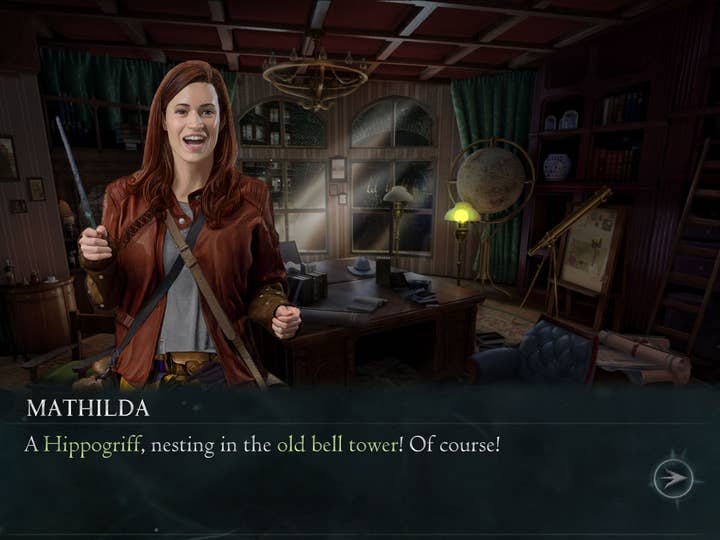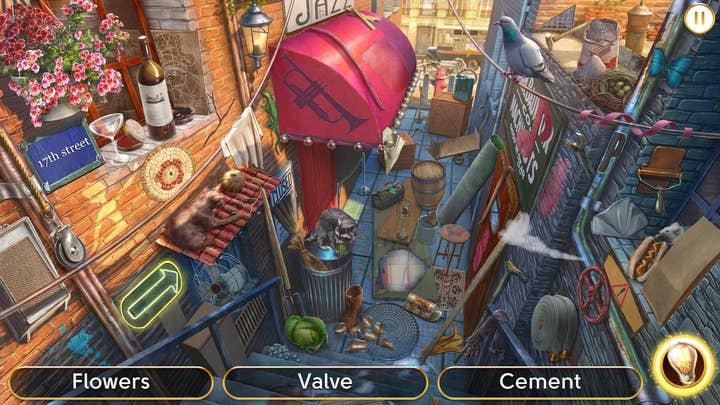Why casual games need a narrative
Mobile studios discuss how they use serialised storylines to drive player retention far beyond launch
Retention is the key to any mobile game's survival, let alone its success.
While there are many ways to bolster retention - regular release of new content, a compelling progression system, and so on - some casual games studios have found a much more creative route to keeping players engaged: telling a good story.
"Casual mobile games work best if they are speedy to understand and simple to get going with," explains Spil Games CEO Tung Nguyen-Khac. "However, if a game is too simple then it stops being satisfying quite quickly.
"Narrative has become important in mobile gaming because it improves engagement and keeps people coming back to a game. Returning players are more likely to spend money, so narrative is a way to increase the revenue value of a game."

Rebecca Harwick, lead writer on Wooga's hidden object title June's Journey, agrees: "You can't form a relationship with a mechanic the same way you can a character. And it's those relationships that stick in the player's mind even when they're not playing. In addition, there's the ever present need to know what happens next, which isn't so different from what you experience with your favorite TV show or book.
"But the other thing that game narrative does is provide additional meaning and emotional resonance to the mechanics themselves. When players play June's Journey, they're not just searching scenes and tapping on objects--they're finding clues to solve a mystery, improvising solutions to challenging problems, exploring a character's space."
"You can't form a relationship with a mechanic the same way you can a character"
Rebecca Harwick, Wooga
Of course not all casual games need a narrative, as Mediatonic's creative director Jeff Tanton observes.
"A match-3 can probably survive without giving the players a complex, multiple-character-arc story-line to help them understand why getting those three bananas in a line is critical to saving the universe," he says. "If anything that's likely to get in the way, and there are far simpler ways of driving players forward and giving a sense of progression; maps, regular changing of background scenery, gradual introduction of new power-ups and mechanics.
"That doesn't imply you ignore story or world building, it just means you need to understand the tone of your game and how players are likely to engage with it."

Perhaps the most obvious casual sub-genre that benefits is hidden object games, which Tanton describes as "a beautiful little outlier, where the story is often the critical difference between you and your direct competitors."

He continues: "It's the glue that holds everything you're asking of the players together and the aspect that absolutely elevates the experience. It's a lot like writing a serial drama, where its up to you to ensure players will want to come back later to see what happens next."
With traditional narrative-driven games, stories are told over a matter of hours but with casual mobile games, studios must spread them out and keep them engaging for months at a time. This is why many titles - particularly hidden object games - tell a more serialised story, adding new episodes as development continues long after launch. Wooga demonstrates this with Pearl's Peril and June's Journey, while Mediatonic has enjoyed success with Fantastic Beasts: Cases From The Wizarding World, set in the best-selling universe of J. K. Rowling.
The trick, of course, is pacing. Players need a steady flow of story beats so that they don't rattle through your content before you have the chance to release more, but equally the progession can't be so slow that they lost interest in the story.
Nguyen-Khac says that extensive testing was crucial when finding the right pace for Mahjong Crimes: Murder on the Orient Express, which mixes the ancient Chinese game with Agatha Christie's iconic murder mystery.
"A match-3 can probably survive without a complex, multiple-character-arc story-line about why getting three bananas in a line is critical to saving the universe"
Jeff Tanton, Mediatonic
"We originally had a story element after each level," he explains. "Through testing we saw this overwhelmed players, so we doubled the number of levels so there was only a story element after every two. Players were much more receptive to this.
"With a casual game, people want to be entertained in a relaxed way. Too much text may turn them off. Therefore we try to tell as much as possible of the story visually. For instance, in one level we reveal a huge clue to the mystery via an image of a newspaper. Players only see it once they've matched all the tiles in a particularly challenging puzzle so we don't ask them to exert more energy by reading lots of text."
Tanton concurs, offering this simple rule for dialogue: "Our rule was always to leave no excess fat in these interactions - unless they really helped sell a character and even then we'd always go back and try to get the same effect, through implied tone or dialect, in the lines that delivered critical information to the case."
June's Journey product lead Georg Baumgarte adds: "For the chapters we have a strict limit on how long dialogue can be in-between gameplay sessions in order to keep the flow going. In other parts of the game we are more loose and can provide additional content that the player can engage with when they want to and at their own pace."

While the goal is to use story to keep players coming back to your game, frequent story beats and extensive conversations mustn't get in the way of the title's core: the gameplay itself. Then again, Harwick argues that in the case of hidden object titles, there should be little to distinguish the two.
"A casual game is a different thing to a novel and so gamers have different expectations, although not necessarily any lower"
Tung Nguyen-Khac, Spil Games
"What's gameplay and what's story?" she says. "Our whole game is set in June's world. It's all story. If you want to make a great narrative game you have to dismiss this idea that you can separate the two.
"The more abstract your mechanics, the more work you have to do simply to make your player's actions clear. That leaves you with less space for the fun stuff: character, drama, humour, romance."
Tanton says that for Fantastic Beasts, Mediatonic laid down some "pretty rigid rules" around how many scenes players would visit or characters they would interact with per case, all based on how fast the average player might move through the game.
"The serial-drama comparison is accurate again here, delivering a story at a regular cadence was very important to us," he says, "Maintaining a sense of fairness in what players are getting out of the time they put in."

Baumgarte details how Wooga's titles handle this. Players receive stars for reaching a certain number of points with up to five stars per scene and five scenes per chapter. That's up to 25 stars, but players only need 15 - just over three per scene - to continue the story.
"It means players feel agency over the chapter progress, even though it's a linear story experience," says Baumgarte. "They can decide in which scene to go to five stars and which scene to leave at three or four. Player agency in a story-driven is key to having an interesting game economy."
Harwick stresses that rewards need to match the time spent reaching them: "If the player's been grinding or waiting for a building to complete, we want to be sure to give them a big payoff, narratively. We also want to be sure to remind them of any necessary plot details that they may have forgotten so that they don't feel as if the story has raced off without them."

There's another important balance to be maintained, one that's far trickier but can have a huge impact on a company's reputation and revenue. Most casual games remain free-to-play, so future content and additional chapters need to be funded through microtransactions. While engaged and satisfied players may well invest in their progress, forcing them to grind through hidden object scenes over and over again will frustrate them and endanger their interest in your story.
"We try to balance the progression and monetisation in a way that there is a low replay demand for the story, and high replay value for the game economy," says Baumgarte.
Nguyen-Khac adds: "We don't balance progression with monetisation directly. Our experience is that players don't like games that are all about getting them to spend money. Instead, we concentrate on making the game great to play - that's a tough enough objective on its own. If players enjoy a game, they keep coming back and if you have good retention, then monetisation tends to flow from that."
"It's an investment we have never ever regretted, and something we take seriously. Get yourself a good writer"
Jeff Tanton, Mediatonic
Writing for a casual audience means developers almost certainly won't be telling the same type of narrative you'll find in console games. Instead a much broader audience means different expectations, but this trio of studios is happy to offer advice to fellow game makers.
"A casual game is a different thing to a novel and so gamers have different expectations, although not necessarily any lower," says Nguyen-Khac. "The story needs to be told in little nuggets, and as much as possible should be visual rather than textual. It should add to the experience, it shouldn't get in the way of playing the game.
"Yes, a good writer is vital to putting the narrative across, but actually they need to understand the visual aspects and the game mechanic too. For Mahjong Crimes, we used a writer who also had experience of game design. That meant we could develop the narrative in parallel with the rest of the game, rather than bolting it on as an afterthought."
Baumgarte says that given the competition for mobile user's time and engagement, casual developers need to go "all in" on story: "The expectations are high. Players send us emails, comments, postcards and even show up - it happened in our office - to give us feedback on our story. We know from interviews that players have high expectations towards our story and our universe. Anachronisms in the hidden objects - like does this car really look like a 1920s model? - plot holes, inaccurate naming of the Island decorations... players notice everything."
Tanton actually disagrees, positing that expectations for casual game narrative is actually very low - but this can work to a developer's advantage if they're willing to put the work in.
"It's an incredible opportunity to make your product stand out if you can deliver some decent, crafted dialogue to complement all of the other sweat, toil - and frankly dark and insane alchemy - that goes into making a game.
"It's an investment we have never ever regretted, and something we take seriously. Get yourself a good writer. Get someone who understands how people talk, and how much they're saying when they're not talking, who understands how the structure of a preceding sentence , or the number of taps between set-up and delivery makes critical difference to a joke landing or leaving everyone feeling kind of sad and awkward."
